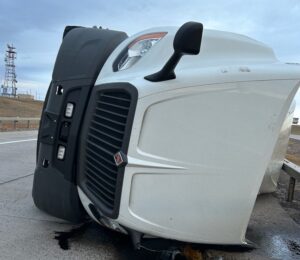MARSHALL, Va. — At the Fauquier Livestock Exchange last week, U.S. Environmental Protection Agency (EPA) Administrator Andrew Wheeler followed up on his November 2018 announcement and took concrete steps to advance the Cleaner Trucks Initiative (CTI). Joined by U.S. Rep. Denver Riggleman (R-VA) and a variety of stakeholders, the CTI rulemaking will establish new, more stringent emission standards for oxides of nitrogen and other pollutants for highway heavy-duty engines. Through this Advance Notice of Proposed Rulemaking, EPA is seeking input from the public and interested stakeholders.
“The Trucking industry touches nearly every part of our economy. A strong and resilient trucking industry is imperative to maintaining a strong and resilient economy. Through this initiative, we will modernize heavy-duty truck engines, improving their efficiency and reducing their emissions, which will lead to a healthier environment,” said EPA Administrator Andrew Wheeler.
“The Cleaner Trucks Initiative is part of the EPA’s efforts to simplify complex regulations and protect our environment,” added congressman Riggleman. “This update to emission standards will help reduce harmful emissions while providing savings for consumers, including constituents in my district. Trucking affects all aspects of the 5th district economy and initiatives like this will help consumers.”
In addition to Wheeler and Riggleman, Virginia delegate Michael Webert, and representatives from the Truck and Engine Manufacturers Association, American Trucking Associations, Diesel Technology Forum, and Owner-Operator Independent Driver Association were in attendance.
“The trucking industry takes clean air seriously and has made significant strides in improving the nation’s air quality over the last 35 years. Since 1985, newly manufactured trucks have reduced NOx emissions by over 98% but our work is not yet done. These reductions have been possible because the EPA has worked with stakeholders — including the trucking industry — to help institute standards that are feasible, achievable and reasonable,” said American Trucking Associations Executive Vice President of Advocacy Bill Sullivan. “ATA is committed to continuing to work closely with EPA on developing the next generation of low-NOx emitting trucks through the Cleaner Trucks Initiative. To this end, the trucking industry seeks one national, harmonized NOx emissions standard that will result in positive environmental progress while not compromising truck performance and delivery of the nation’s goods.”
OOIDA echoed ATA’s support for ongoing conversations and cooperation with the trucking industry while pursuing this initiative.
“Serious problems with earlier rulemakings have left small-business truckers justifiably wary of new emissions reduction proposals. However, over the last year, representatives of the EPA have gone to great lengths to fully understand how new policies may affect our members, which wasn’t standard practice under previous administrations. OOIDA believes the agency’s desire to avoid the mistakes of the past is genuine. We’re hopeful our ongoing conversations with EPA and the feedback our members will soon provide during the ANPRM comment period will lead to the development of an acceptable new standard,” said OOIDA President Todd Spencer.
This rulemaking will also offer opportunities to streamline and improve certification procedures to reduce costs for engine manufacturers. This action follows on the petitions from over 20 organizations, including state and local air agencies, to revise and promulgate more stringent NOx standards.
From 2007 to 2017, U.S. NOx emissions dropped by more than 40%, but there is more work to be done. Today, more than 100 million people live in areas of nonattainment for ozone and particulate matter (PM), and according to EPA estimates, heavy-duty vehicles will continue to be one of the largest contributors to NOx emissions — a precursor of ozone and PM formation — from the transportation sector in 2025. Updating these standards will result in significant mobile source NOx reductions, which will aid communities across the country in achieving ozone and particulate matter attainment with EPA’s National Ambient Air Quality Standards program.
EPA last revised NOx standards for on-highway heavy-duty trucks and engines in January 2001. Pursuant to the Clean Air Act, the CTI will provide manufacturers sufficient time to comply with new standards and ensure that updated standards consider feasible emissions control technologies. EPA intends to publish a proposed rule in early 2020.
The Trucker News Staff produces engaging content for not only TheTrucker.com, but also The Trucker Newspaper, which has been serving the trucking industry for more than 30 years. With a focus on drivers, the Trucker News Staff aims to provide relevant, objective content pertaining to the trucking segment of the transportation industry. The Trucker News Staff is based in Little Rock, Arkansas.














